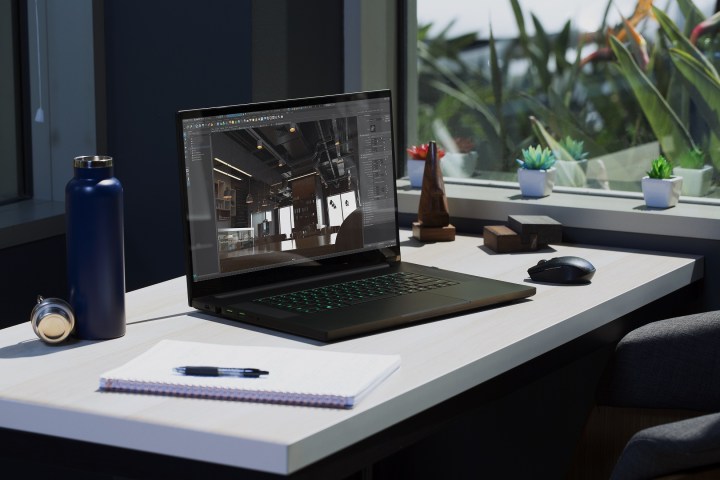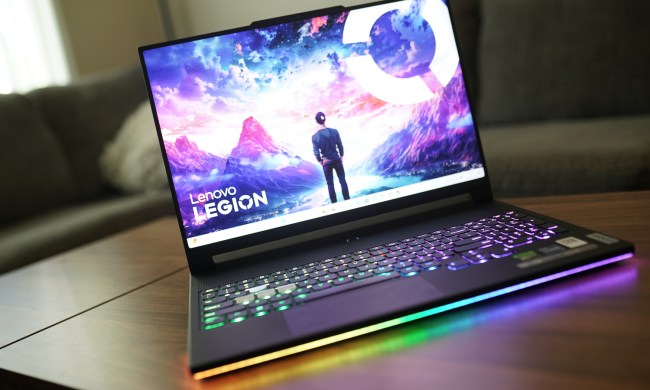If you’re in the market for a new gaming laptop, the Razer Blade series should be at the top of your list. Razer has refined its machines over the years, and the Blade series of laptops are some of the best looking and most powerful devices on the market.
However, choosing a Razer Blade isn’t always as straightforward as it seems. There is the Base model, the Advanced edition, the trimmed down Stealth ultrabook model, the desktop killer Pro 17, and the creator-oriented Studio model. What are the pros and cons of each, and which one is right for you? Let’s break each one down to see how they stack up.
Razer Blade Stealth">Razer Blade Stealth

The Razer Blade Stealth is the most affordable of the lineup, and it likewise has the weakest specs. That’s not necessarily a bad thing, as it easily outperforms essentially every ultrabook in gaming. That’s why we recommend it. It is the thinnest and lightest laptop of the Razer series, too. So, if you’re looking for something portable for work that you can also game on while traveling, the Razer Blade Stealth is likely your best option.
The base model starts at $1,600 and comes with an Intel Core i7-1065G7, a GTX 1650 Ti Max-Q, 16GB dual-channel RAM, and a 512GB solid-state drive. Those are some pretty significant specs at that price (just look at the way it stacks up against the MacBook Pro). It isn’t as powerful as the Base model Razer Blade, but it is a competent machine for online shooters like Overwatch.
One downside to this laptop, though, is its lack of customization. There are more expensive models, but they only make improvements on the 1080p display. The base model has a 60Hz display, with an $1,800 model offering 120Hz, and a $2,000 model offering a 4K 60Hz display. If you are looking for anything more powerful, you will have to move away from the thinner profile of the Razer Blade Stealth.
Razer Blade 15, Advanced, and Studio Edition">Razer Blade 15, Advanced, and Studio Edition

The Razer Blade 15 starts with the Base Edition. For $1,600, buyers get an Intel Core i7-10750H, a GTX 1660 Ti, 16GB dual-channel memory, and 256GB SSD. The display is 1080p with a 144Hz refresh rate. It is very similar in specs to the Razer Blade Stealth, but it has dropped the higher storage in favor of a more powerful graphics card. The bigger card also makes the Razer Blade quite a bit chunkier than the Razer Blade Stealth. Maxing out the Razer Blade 15, users get a
That’s where the Advanced model comes in. Starting at $2,600, the Advanced model comes with an Intel Core i7-10875H, a 512GB SSD, and an RTX 2070 Super Max-Q. The performance difference between a regular 2070 and a 2070 Super is pretty significant, so gamers wanting the best of the best will definitely lean toward the Advanced model. With a premium $3,300 price tag, the maxed-out Advance model comes with a
While both models are great gaming machines, the thermal performance on both holds them both back from utilizing the hardware to its full potential. Both attempt to balance performance for gaming and content creation, and while they do well in both, neither are they the leaders in, either.
The Razer Blade Studio is the most expensive Blade model, and for good reason. Its specs are optimized for content creators, as evidenced by the
The Studio edition isn’t for everyone, but if you’re a full-time content creator, it is definitely an option worth considering.
For a more in-depth look at the Blade 15 and its options, check out our buyer’s guide for the Razer Blade 15.
Razer Blade Pro 17">Razer Blade Pro 17

The Razer Blade Pro 17 is Razer’s desktop replacement. It may seem cumbersome to carry around, but that’s because it is meant to stay on your desk. The Pro 17 includes up to a 2080 Super Max-Q, the same as the top end of the Advanced model. However, the big selling point of this device is the number of display options. They include a 300Hz 1080p display, a
All of that power and display performance make the Blade Pro 17 more of a desktop replacement, as it’s not the most portable of systems. For one, the 17-inch display is massive, and users will want a roomy bag to lug it around in. The Pro 17 is also chunky at 0.78 by 10.24 by 15.55 inches, and it weighs just over 6 pounds. That may not sound like a lot, especially if you don’t remember the bygone days of giant
That weight is in no small part due to the 70.5 watt-hour battery. It’s a beefy battery for a beefy computer, but even then it struggles to keep up with all the components it has to power.
All of this makes for a device that is meant to stay in one place, which is what Razer designed it to do. This is supposed to replace your desktop, after all. Luckily, thanks to the powerful hardware packed inside, the Pro 17 can handily replace anyone’s desktop.
Which Razer Blade is right for you?
Which device is right for you largely depends on what type of user you are. If you are someone who travels for work and wants to do some light video and photo editing or gaming, then the Razer Blade Stealth is probably your best option. It is the lightest and smallest unit, but still has plenty of power.
If you are looking to play more intensive games but still want something portable, either the Base or Advanced models of the Razer Blade are best. There are a lot of configurations available between these two, so you can choose the one that is best for you.
If you want a laptop to be a desktop replacement and don’t mind the size, the Razer Blade Pro 17 offers the same experience with more screen real estate and a higher
If you are a content creator that needs (or just wants) the most powerful thing you can get your hands on, it is hard to beat the Razer Blade Studio Edition.




